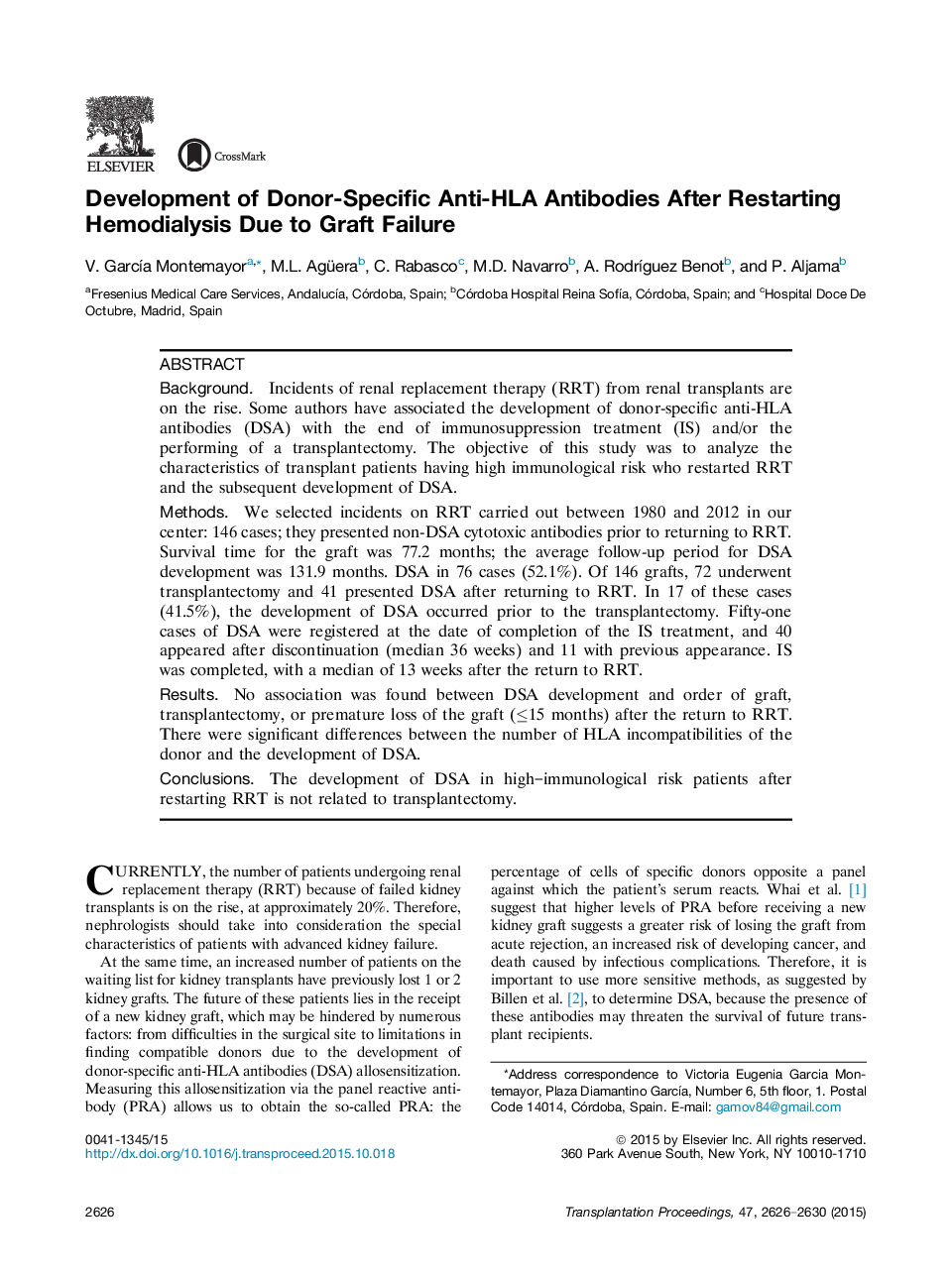| Article ID | Journal | Published Year | Pages | File Type |
|---|---|---|---|---|
| 4255893 | Transplantation Proceedings | 2015 | 5 Pages |
•The objective of our study was to analyze the characteristics of transplant patients having high immunological risk who re-initiated RRT and the subsequent development or not of DSA. High immunological risk is defined as those patients resulting positive for cytotoxic antibodies (donor-specific or not) prior to restarting dialysis.•The importance of this topic lies in that it determines the characteristics of those patients who develop greater allosensitization so that we may determine correctable factors that permit re-transplantation.•It is necessary to personalize treatment on the basis of specific characteristics of each patient.•We suggest that the development of DSA in patients at a high immunological risk after the restarting of RRT is not related to the undergoing of transplantectomy.•Subsequent controlled studies with an increased number of patients should be carried out to reach more decisive conclusions.
BackgroundIncidents of renal replacement therapy (RRT) from renal transplants are on the rise. Some authors have associated the development of donor-specific anti-HLA antibodies (DSA) with the end of immunosuppression treatment (IS) and/or the performing of a transplantectomy. The objective of this study was to analyze the characteristics of transplant patients having high immunological risk who restarted RRT and the subsequent development of DSA.MethodsWe selected incidents on RRT carried out between 1980 and 2012 in our center: 146 cases; they presented non-DSA cytotoxic antibodies prior to returning to RRT. Survival time for the graft was 77.2 months; the average follow-up period for DSA development was 131.9 months. DSA in 76 cases (52.1%). Of 146 grafts, 72 underwent transplantectomy and 41 presented DSA after returning to RRT. In 17 of these cases (41.5%), the development of DSA occurred prior to the transplantectomy. Fifty-one cases of DSA were registered at the date of completion of the IS treatment, and 40 appeared after discontinuation (median 36 weeks) and 11 with previous appearance. IS was completed, with a median of 13 weeks after the return to RRT.ResultsNo association was found between DSA development and order of graft, transplantectomy, or premature loss of the graft (≤15 months) after the return to RRT. There were significant differences between the number of HLA incompatibilities of the donor and the development of DSA.ConclusionsThe development of DSA in high–immunological risk patients after restarting RRT is not related to transplantectomy.
